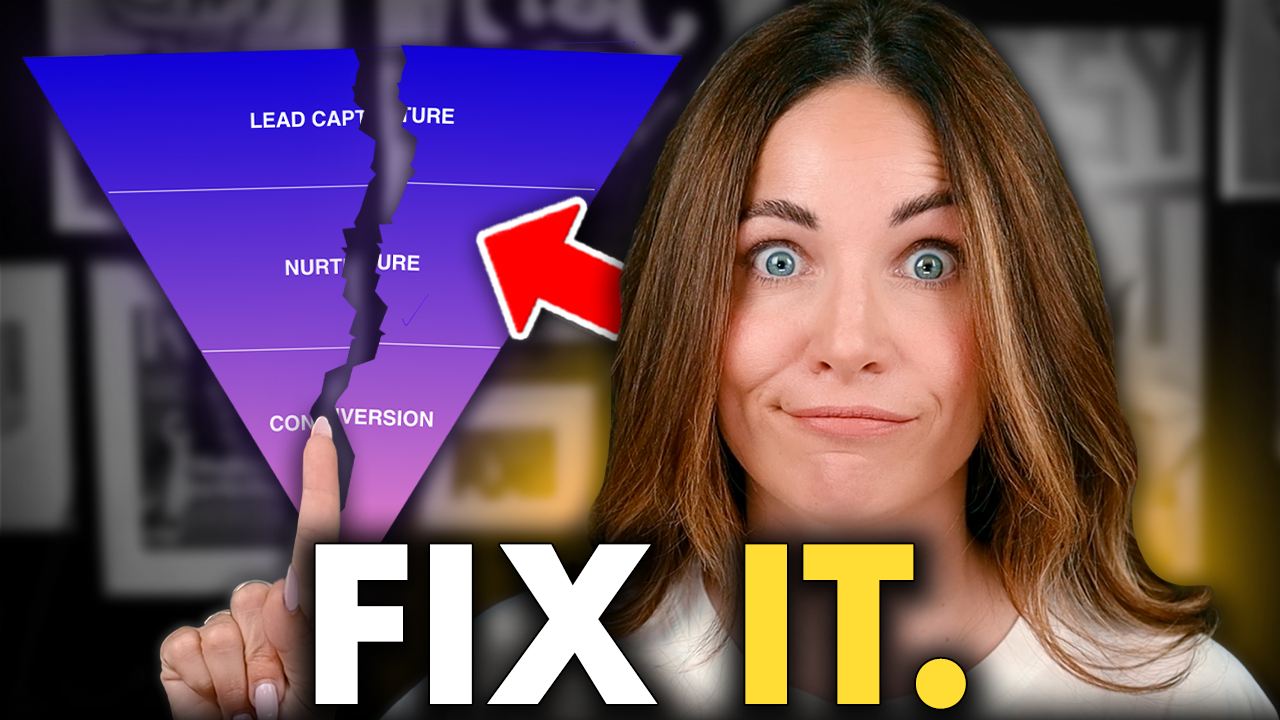Whether you’re just starting out, or have been in the freelancing game for awhile, there is ONE major difference between those writers who earn $100 a month and those who earn $10,000 a month. Wanna know what it is? Keep reading…
Hey guys, it’s Alex! Super excited to have you here.
If you’re new to the crew, welcome! Every single week, I release a new tutorial here and on YouTube about how to start and scale your freelance copywriting business, so be sure to subscribe to my YouTube Channel!
Now, in this post, I’m diving into the often hella-awkward art of ASKING FOR MONEY! So if you’ve ever wondered exactly how to charge for your freelance writing services, you are in the right place.
Because no matter where you are on your entrepreneurial journey this question is INEVITABLE! And it comes up time and time again as you take on new clients and projects.
Perhaps you’ve been asked to rewrite the entire website of a company that’s going through a brand makeover…
Or maybe a client simply wants you to spruce up a small batch of marketing emails…
Or maybe you’ve been asked to put aside a few hours a week for a client in need of a part-time copywriter…
The great thing about being a freelancer is that your job can take many different forms, to fit many different needs.
But this also means there’s no single pricing method that you can use for all your projects. How your charge your client ultimately depends on the scope, the client, and the level of experience or expertise you possess.
Now, if you’re new to copywriting or freelancing and want to know where to start, you may want to check out my video on How To Become A Freelance Copywriter & Get Your First Client right here.
And in this post, I’m sharing four pricing models that I’ve used as a copywriter, what’s great and not so great about them, and what you need to know in order to build a long-term $10,000/month copywriting business.
Pricing method #1…
Method 1: Hourly
Charging based on the number of hours you work is probably the most straightforward way to help your clients understand exactly what they’re paying for.
Once you have the scope of work required, you can estimate the total amount of hours you believe it would take for you to get the job done.
I usually recommend hourly rates for ad-hoc or ongoing general tasks that don’t require heavy briefing. This can be things like editing, proofreading, optimizing copy from a previous writer, or small pieces that require a quick turn around.
However, if you’re someone who’s new to the biz, building your portfolio, and not quite sure what your hourly rate should…. This is a great pricing model to start with for your first couple of projects while you find your groove.
The trick, though, is to keep a detailed log of what you’re working on so you know what each task would generally entail moving forward — whether that’s research, calls with the client, or actual writing time.
Plus — you never know if your client might request a breakdown! You don’t want to be caught scratching your head, so there are some great time tracking tools out there, like Toggl and Harvest, that allow you to log your hours effectively,
One of the possible downsides of charging by the hour is that you might get clients who expect you to work faster and measure your deliverable by time instead of value! This is why it’s important to lock down the project scope before the work starts so that you can give a realistic quote. (P.S. One way to do that is with a SOW, and have a Statement of Work template right here that can help!)
You also might have a hard time keeping a consistent income if your client is only needing you for a few hours a week. So although you might be subconsciously reserving valuable mindshare for that potential client, you’re not paid for hours you spend “waiting” for work.
So let’s move on to another popular pricing method.
Method 2: Fixed & Project-Based
Fixed pricing is when you quote a flat fee for an entire project. This can be packaged based on the time and effort it will take for you to complete it. The best part of this pricing method is you always know exactly how much you’re getting paid, which will help you with cash flow and your overall finances.
This pricing model works great for small to medium projects that are frequent, such as email sequences and landing pages. Or short-term projects that take between a couple of weeks to a few months to wrap up.
Fixed pricing is great because you can predict workflow and plan ahead to make sure you’re maximizing your income every single month.
Just like hourly rates, though, it takes experience to be able to estimate the amount of time you require to complete the work as accurately as possible — and include room for contingencies and potential scope changes. You’ll probably need to run through a few projects before you discover your sweet spot for pricing your projects.
(And if you want to learn more about that, check out my free Pricing Checklist next).
Okay, pricing method #3…
Method 3: Revenue Share
This is a pretty unconventional way of getting paid, but with the right client and the right partnership this can be what takes you’re writing business from a “trading time for money” gig to a “passive income” stream.
In this pricing structure, you typically waive or discount your service fees for a project in exchange for a percentage of your client’s sales revenue resulting from your copy.
So it goes without saying that this pricing model only works for deliverables that are directly written for sales like sales letters, webinar scripts, sales emails or promotional campaigns.
This agreement can run for a set timeframe, or until a target return amount has been achieved for the particular campaign you worked on. Just make sure you’re clear about how the revenue is collected, measured and distributed — as well as whether you’re paid on gross, net, or net net revenue.
While there is potential for substantial earnings if your copy generates a large amount of sales, there’s no guarantee that the revenue will meet your target amount. Plus, it will take a little longer before you get the money, so it can be a risky move. That’s why I only recommend this pricing model if you are confident in your experience, have a deep understanding of the specific market, and have built a trusting relationship with your client. Once you get there though, this is the secret sauce.
Ok, lastly, pricing method #4…
Method 4: Retainer
A retainer agreement is where you allocate a specific amount of your time each month exclusively to one client’s needs in exchange for a set and steady income!
This pricing model is fantastic, not just because it gives you a more reliable cash stream but also the ability to develop a great long-term working relationship with your client, who will likely be incentivised to invest in your growth.
If you’ve been in the freelance game long enough, you’ll know never to underestimate the value of having a regular client who pays you a consistent paycheck on time, everytime. The amount of time and money wasted prospecting and onboarding new clients is enough to cut your business in half! The longer you work with a client, the more predictable and repetitive your work will become, making it easier for you to scale your client’s business, as well as your own.
The secret to getting paid on retainer is to LEAD WITH VALUE. Think – how can I consistently over-deliver to make my client wonder how they ever did this without me?
And THAT, my friends is the single biggest difference between writers earning $100 a month and those earning $10,000 a month or more copywriting. The writers who are making bank think LONG TERM about their client relationships. They PRIORITIZE working with clients that want an ongoing partnership, mutual accountability and trust…
And they offer VALUE UPFRONT, rather than nickel and diming their clients for every single minute spent and word written.
My copywriting business is built on this maxim. While I still use all 4 of these pricing models on a regular basis depending on project scope and the clients needs, I’d rather have a few clients who pay me on retainer then a bunch of clients I have to chase down for $100.
Your goal as a copywriter should be to work towards revenue share and retainer-based pricing, but it does take time to get there. Hourly and fixed pricing is a great way to get started, build rapport with a new client and gain experience… But at some point, you’ll need to say no to $100 clients to make room for those $1000 and $10,000 clients so you can actually build a 7-figure writing business, and not just a side hustle. Catch my drift?
Now, if you’re stumped on exactly how much to charge for your writing services – you’ll definitely want to check out my post on 8 Pricing Tips you need to consider before sending a quote.
Leave me a comment below before you go! Thanks so much for reading guys. And remember to also go subscribe to my YouTube Channel. Till next week, I’m Alex. Ciao for now!
Watch This Instead


